Greetings, cyber-readers!
After several days of absence due to work occupations, I bring you an excellent post that I dedicate to my Spanish collaborator Teobaldo from the Tenerife Islands Spain. Which always helps me with the ideas (themes) to develop. And I hope this post also helps many who want to have a private cloud (Home Intranet) that allows them to share their own documentary or multimedia resources in a more efficient way, beyond a simple file server with Samba.
Well first I will tell you about owncloud.
ownCloud is a Software (web application) developed under the philosophy of SFree oftware that allows you to implement a File server Advanced Type Cloud (Cloud), in which like a File server normal can share resources such as images, documents, music, videos, and any other kind of data, with the advantage of viewing (integrating) them not only through a simple file browser but also a Web Browser, and for example playing multimedia files online from it, making easy access through multiple device platforms (PC, Mobile , Tablets, among others).
To visit the website of the application click on the name ownCloud and to know what it is about live you can use the Online demo of the application. In this post I am not going to describe the great benefits of the product since on the creator's page there are many Documentation and on the Internet searching with Google or not. Not counting on the great documentation in official video formats (link 1 - link 2) or not, such as this.
So I will go straight to the point about Installation and configuration.
- INSTALLATION:
For the installation we will rely on both OwnCloud Official Manuals as per the pages of OpenSuse about Owncloud.
- OwnCloud 9.0 Server Administration Manual - (html / PD.F)
- OwnCloud 9.0 User Manual (html / PDF)
- Install Package ISV OwnCloud: Community / Owncloud
- Install Package ISV OwnCloud: Desktop / Owncloud-Client
Summarizing and assuming that we have already built our small home server with or without samba and / or apache installed, the steps would be the following:
Note: For this practical example these are the characteristics of my test server already available
- Clone Computer: Generic
- Motherboard: AsRock Conroe 1333-D667 with Dual Channel
- Processor: Intel (R) Pentium (R) Dual CPU E2140 @ 1.60GHz
- Memory: 2 GB (Ramaxel 1GB 1RX8 PC2-6400U-666LF / Corsair VS1GB533D2)
- Main hard drive (320 GB): Samsung HD322HJ
- Secondary hard drive (500 GB): WDC WD5000AAKC-001CAD
- Wireless card: D-Link (RaLink RT2561 / RT61 Rev. B - 802.11g)
- Graphics card: NVIDIA GT218 [GeForce 210]
Software:
- Operating System: DEBIAN Testing (9 / Stretch)
- Virtualization Platform: VirtualBox 5.0.16
- File Server: Samba 2: 4.3.3
- Web server: Apache 2.4.18-1
- Programming Platform: PHP 5.6.17
- Database Platform: MySQLServer 5.6.28.1
Configuration:
- Host Name: server-sysadmin
- Dominion Man: home.com
- LAN IP: 192.168.1.109
INSTALLATION STEPS
- Installing OwnCloud File Server on Home Server:
# Descargar llave del repositorio de Owncloud Server
wget -nv https://download.owncloud.org/download/repositories/9.0/Debian_8.0/Release.key -O Release.key
# Instalar llave descargada
apt-key add - < Release.key
# En caso de falla de descarga he instalación pruebe este otro método:
apt-key adv --recv-keys --keyserver \ keyserver.ubuntu.com AB7C32C35180350A
# Agregar Linea de Repositorio de Owncloud Server
echo 'deb http://download.owncloud.org/download/repositories/9.0/Debian_8.0/ /' >> /etc/apt/sources.list.d/owncloud.list
# Actualizar listas de paquetes de todos los Repositorios
aptitude update
# Instalar Paquete Owncloud
# aptitude install owncloud
# Borrar llave descargada
rm -f Release.key
When installed MySQL together has Own Cloud Server remember that it will ask you to create the username and password for that BD manager.
Note: In case of packaging problems, take into account that all these packages must be perfectly installed without dependency problems.
curl libapache2-mod-php5 libcurl3 libdbd-mysql-perl libdbi-perl libhtml-template-perl libmcrypt4 libonig2 libqdbm14 libterm-readkey-perl mysql-client-5.6 mysql-client-core-5.6 mysql-server mysql-server-5.6 owncloud owncloud -deps-php5 owncloud-files php-pear php-xml-parser php5 php5-cli php5-common php5-curl php5-gd php5-intl php5-json php5-mcrypt php5-mysqlnd php5-pgsql php5-readlite smb5-sqlite phpXNUMX-sqlite
Install them if necessary.
Finally, the OwnCloud server must configure the valid Domains with which remote access will be allowed. For this purpose, you must edit the config.php file in the path:
»/Var/www/owncloud/config/config.php«
'trusted_domains' => array (0 => 'localhost', 1 => 'server-sysadmin', 2 => '192.168.1.109',),
I add the name of the server to access them easily through the Computer Browsers and IP adress to facilitate access from Browsers of Mobile Devices (Tablets / Phones), since the latter may have difficulty performing the DNS resolutions suitable to access by the name of the equipment.
- Installing the OwnCloud-Client Desktop Client on the Workstation:
# Descargar llave del Repositorio de Owncloud Client
wget -c http://download.opensuse.org/repositories/isv:ownCloud:desktop/Debian_8.0/Release.key
# Instalar llave descargada
apt-key add - < Release.key
# Agregar Linea de Repositorio de OwnCloud Client
echo 'deb http://download.opensuse.org/repositories/isv:/ownCloud:/desktop/Debian_8.0/ /' >> /etc/apt/sources.list.d/owncloud-client.list
# Actualizar Listas de Paquetes de todos los Repositorios
aptitude update
# Instalar paquete OwnCloud Client
aptitude install owncloud-client
# Borrar llave descargada
rm -f Release.keyCONFIGURATION STEPS
- Owncloud Server Configuration from Home Server:
Run a File Browser and run the URL: « http://localhost/owncloud »
And for our practical case we proceed to the quick setup (Wizard) provided by the web interface for a quick and unproblematic configuration, since it will only ask us enter the name of the Admin and his access password, in a window as shown below:
The system will make the pertinent adjustments and we will be able to explore the installed application:
- Owncloud Client Configuration from Workstation:
Run the apps « OwnCloud Desktop Sync Client »Created in the category of« Accessories »And follow the steps as shown below:
As you can see, install ownCloud In a home network, it can allow us to see, for example, Online movies from any device from our home server, among many other collaborative tasks. further ownCloud it can be easily integrated with other useful applications such as Mail Servers for the storage and management of user data.
Botton line, ownCloud allows us create a server (home or business) and connect it to the internet, in a simple way. We will also be the ones who will manage it by controlling access to stored information. We can hire a hosting and install owncloud, but we can also install it on our own computer. In this way we eliminate the limitations in terms of capacity since we will have all the free space that we have on our own hard drive.
ownCloud brings activated by default support for WebDAV with which we can connect to our cloud from a file explorer and from a web browserb; It also has facilities to synchronize your calendar, manage your contact list, and stream audio and video.
Some of its main characteristics are:
- Simple web interface
- Accessing your files through WebDAV
- Share files to OwnCloud users and non-users
- PDF file viewer
- Calendar / Agenda
- Contact management
- Integrated music player
- A gallery where you can view your images
- A simple collaborative text editor.
- Integration with LDAP.
- File notifications.
- Version Control (Versioning).
- Encryption.
- User and group management.
- Task scheduler.
Remember, Owncloud need to work Apache2 and PHP5 support. And optionally MySQL and Perl. It is open codeor, so you don't need to pay anyone anything, you only need a machine with the necessary storage you require, all your information is with you, it does not reside on external servers, so all your information is more secure and you can have an unlimited number users on your server. For additional information click here.
Por last, ownCloud has a large selection of built-in apps that are created and approved by the members of their community, which make them available for download from within the application management screen of their server Owncloud. If the built-in are not enough you can get more from apps.owncloud.com, which have been developed thanks to the OwnCloud Open API. In this store you can find applications in all categories: Multimedia, PIM, Productivity, Games, Tools and much more. The only difference is that unlike the applications available for download from the screen of Managing applications in OwnCloud, applications in apps.owncloud.com do not have full guarantee of safety and compatibility, so it must be careful with them when installing. For this reason, they must be installed manually.
I hope you liked the Post and it is very useful for you.

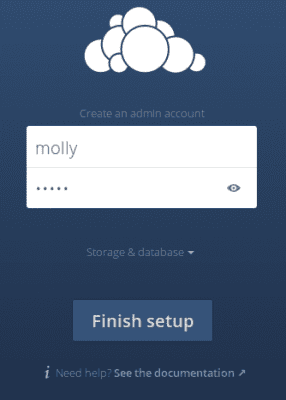
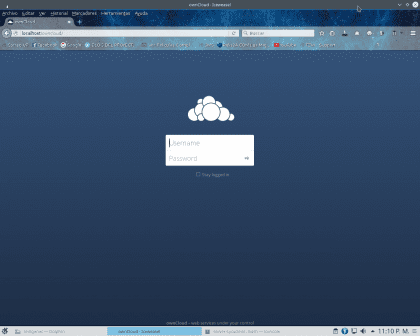
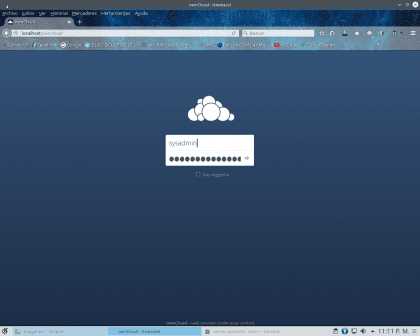
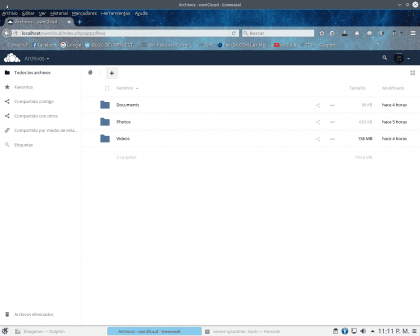

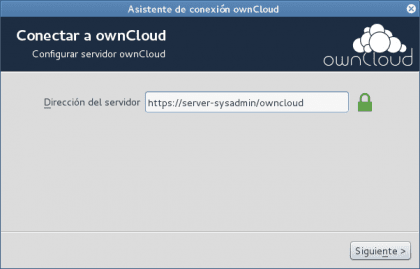
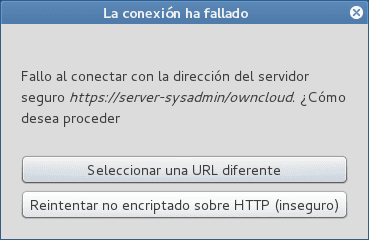

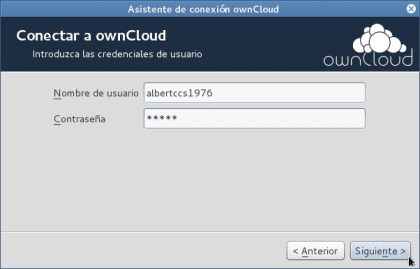
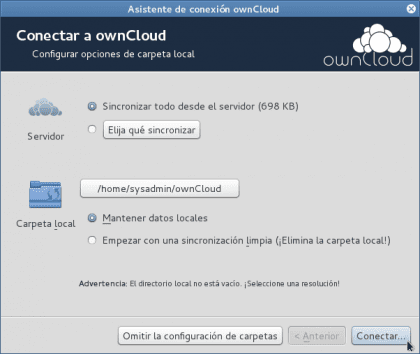
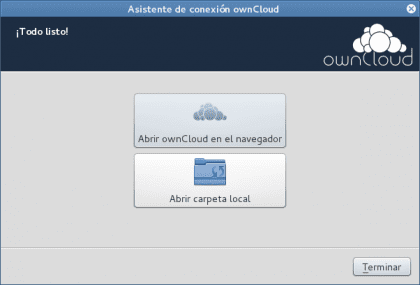
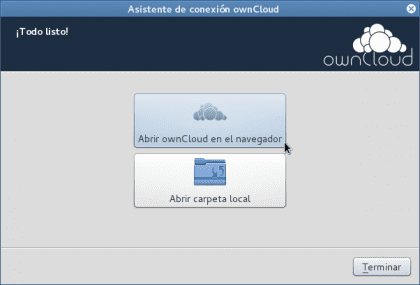
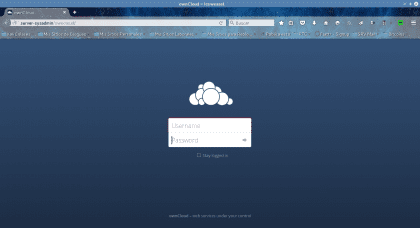

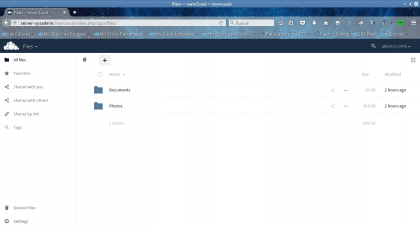



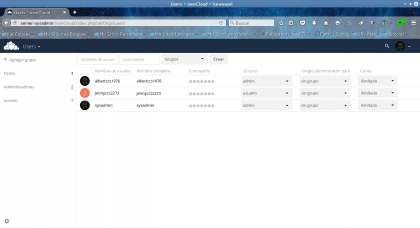
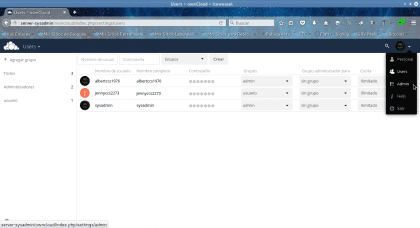
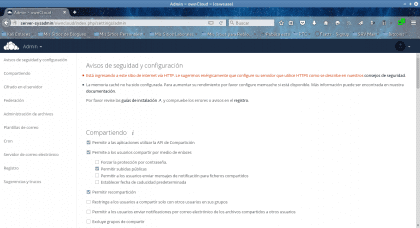


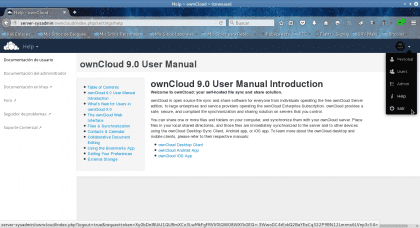


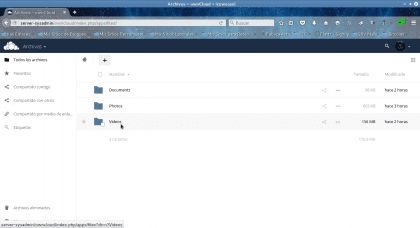
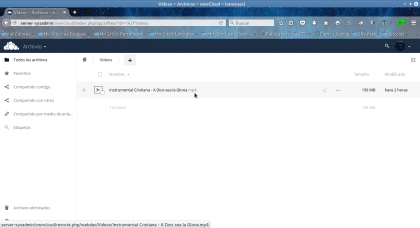
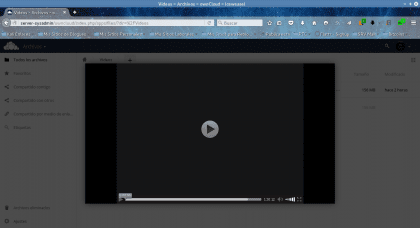


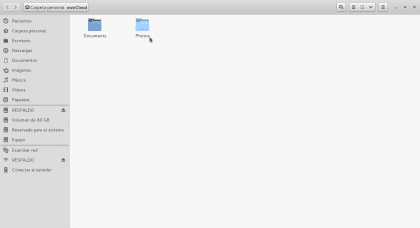
"We can connect to our cloud from a file explorer and from a web browser"
can I connect to the cloud from anywhere in the world?
For that you need a public domain (eg. http://www.no-ip.com) and the well-configured modem-router so that the connection to your server can be established from outside.
Exactly "you can connect to your cloud from anywhere in the world" with a Web Browser and from a File Explorer when you have it as an Intranet at home!
but what is this service for? can I store files in the cloud with this service? How would the installation in Manjaro be?
What is it for? Well, for you to set up your own service in the "cloud", either by hiring a VPS and a domain so that you can access it from anywhere or on your home server so that it is accessible only locally. It works the same as Drive, Dropbox, etc.
Greetings.
It would be nice if they explain step by step how to mount owncloud in docker and make it work with an nginx proxy….
I have already installed Owncloud several times, and it is wonderful, what I have never managed to do is make it work from the internet. That is, access from any browser from another PC to my cloud. Once I found something that solved it, I don't remember the name, but it was a subscription and you had to pay. There must be a way to access the local server from the internet, but I haven't found it.
In general terms, if you have a static public IP (dedicated service) it is as simple as port forwarding to the local IP of the Owncloud server.
Otherwise you must use a service such as no-ip.com.
Anyway, if you are going to open your private cloud to the Internet, you must be very clear that you will have to use encryption, you will not want your private files to fly around like nothing for anyone to "take".
By the way, I will mention that another alternative (which I have used for a while) is Seafile, it is written in C so it is incredibly fast and also has differential synchronization, that is, it uploads the portion of the file that was modified only (instead from the file). As far as I know, Owncloud does not have this last feature (correct me if I'm wrong), in addition to being written in PHP, which I personally don't like.
Greetings.
Or we create an openmailbox.org account and we already have cloud.openmailbox.org. It is 1GB nothing more but it is enough for memes, documents and my contacts
This Guide explains a little how to make it available on the Internet!
http://www.interorganic.com.ar/josx/owncloud.pdf
How do I get the ones in the middle of the screen
The system is spectacular. Nothing better than having your personal data stored and accessible in one's home or physically visible, without having to resort to the cloud without knowing where our data will go and in whose hands !!!
I would add something as vital as it is, a RAID controller. The primary or secondary disk becomes damaged and all data would be lost. A RAID 1 with two HDDs would suffice, for me.
Greetings, Angelo.
Greetings, I liked everything related to creating a cloud, I have some doubts, have you heard of the aws? I think it has a linux base, which allows to install a program that manages the database, can owncloud do this too?